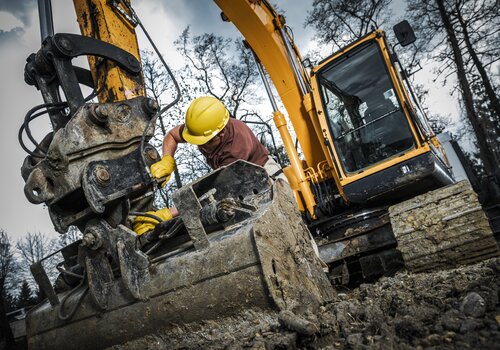In the construction industry, the push towards sustainability is more than just a trend—it's becoming a necessity. Construction workers are on the front lines of this transformation and understanding how renewable energy can be harnessed on construction sites is crucial. Let's dive into the world of solar, wind and other renewable energy sources, and explore how they can be integrated into your daily operations.
The Power of Solar Energy
Solar energy is one of the most accessible and widely used forms of renewable energy. For construction sites, solar panels can be a game-changer. Imagine having a reliable source of power that reduces your dependency on traditional electricity grids and cuts down on fuel costs for generators.
How It Works: Solar panels convert sunlight into electricity using photovoltaic cells. These panels can be installed on-site to power tools, lighting and even temporary offices. The beauty of solar energy is its scalability—you can start with a few panels and expand as needed.
Benefits:
• Cost Savings: Once installed, solar panels can significantly reduce electricity bills.
• Environmental Impact: Solar energy is clean and reduces carbon emissions.
• Reliability: Solar panels can provide power even in remote locations where grid access is limited.
Harnessing Wind Energy
Wind energy might seem less practical for construction sites, but with the advent of portable wind turbines, it's becoming more feasible. These turbines can be set up on-site to generate electricity from wind, providing a supplementary power source.
How It Works: Wind turbines convert kinetic energy from wind into electrical power. Portable turbines are designed to be easy to transport and set up, making them ideal for temporary construction sites.
Benefits:
• Supplementary Power: Wind turbines can provide additional power, especially in windy areas.
• Sustainability: Like solar, wind energy is clean and renewable.
• Cost Efficiency: Over time, wind energy can reduce reliance on fuel-powered generators.
Other Renewable Energy Sources
While solar and wind are the most common, there are other renewable energy sources worth considering:
• Hydropower: If your construction site is near a water source, small-scale hydropower systems can be used to generate electricity. These systems harness the energy of flowing water and can be a reliable power source.
• Bioenergy: Bioenergy involves using organic materials (like plant waste) to produce energy. On construction sites, this can be achieved through biomass generators that convert waste into power.
• Geothermal Energy: Heat from the earth's core is used to produce geothermal energy. While more complex to implement, it can provide a consistent and sustainable power source for larger projects.
Practical Implementation on Construction Sites
Integrating renewable energy into construction sites requires planning and investment, but the long-term benefits are substantial. Here are some steps to get started:
• Assessment: Evaluate your site's energy needs and the feasibility of different renewable energy sources. Consider factors like location, climate and project duration.
• Planning: Develop a plan to integrate renewable energy. This might include installing solar panels, setting up wind turbines, or exploring other options like hydropower.
• Installation: Work with experts to install and configure renewable energy systems, making sure they are in compliance with safety regulations and standards.
• Monitoring: Regularly monitor the performance of your renewable energy systems. This will help you optimize their use and address any issues promptly.
• Training: Educate your team on the benefits and operation of renewable energy systems. This will ensure everyone is on board and can effectively use the new technology.
The Future of Renewable Energy in Construction
The construction industry is evolving, and renewable energy is at the forefront of this change. By harnessing solar, wind and other renewable sources, construction sites can become more sustainable, cost-effective and resilient. As construction workers, embracing these technologies not only benefits the environment but also enhances your work experience and project outcomes.
By understanding and implementing these technologies, you can contribute to a greener future while improving efficiency and reducing costs. So, let's harness the power of the sun, wind and more, and build a sustainable tomorrow.
Photo credit: SHUTTERSTOCK.COM/ULTRAMANSK












